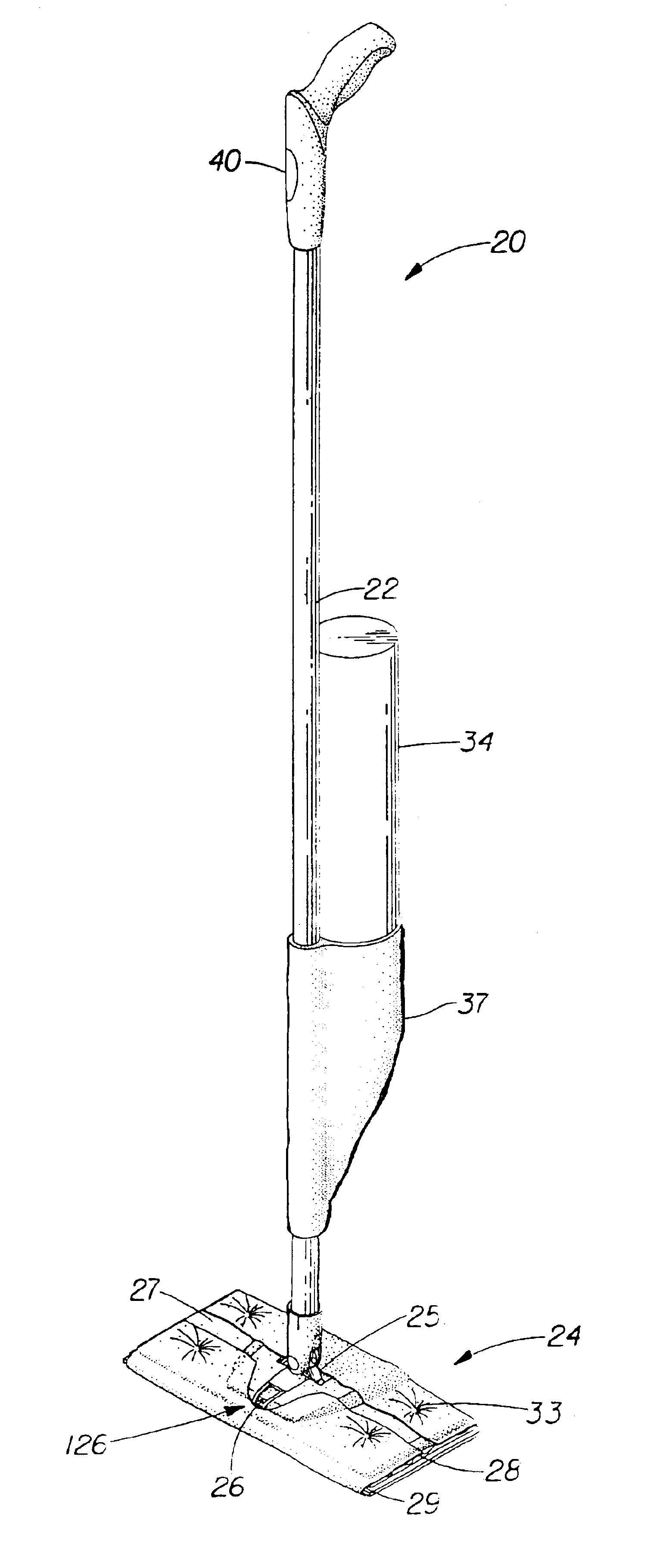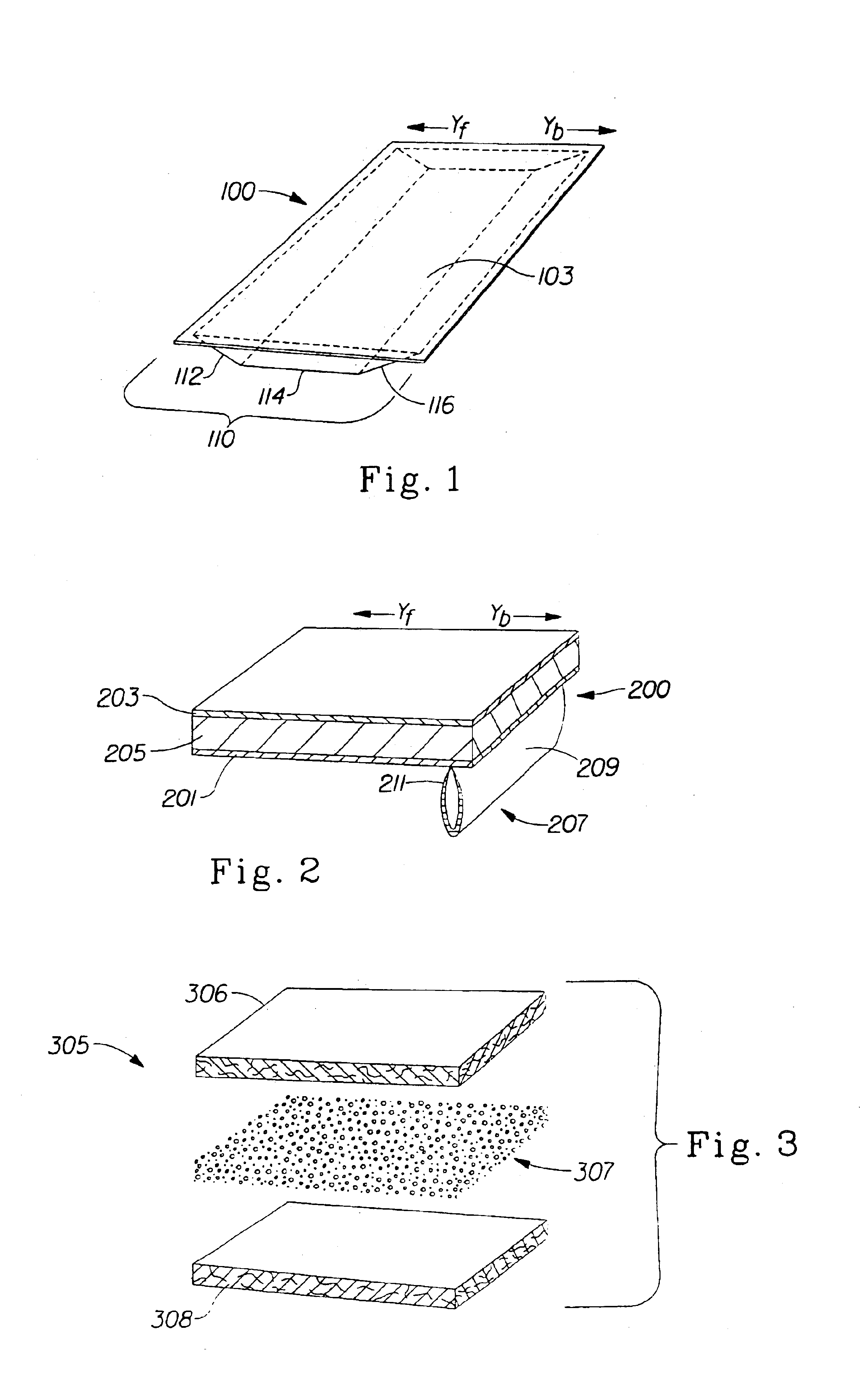Cleaning composition, pad, wipe, implement, and system and method of use thereof
a technology of cleaning composition and cleaning composition, applied in the direction of carpet cleaner, liquid handling, hand devices, etc., can solve the problems of requiring the inconvenience of performing one or more rinsing steps, and affecting the effect of cleaning effect,
- Summary
- Abstract
- Description
- Claims
- Application Information
AI Technical Summary
Benefits of technology
Problems solved by technology
Method used
Image
Examples
example 1
A handle having a length of 94 cm, an outside diameter of 22 mm and an inside diameter of 16 mm, and which is made from aluminum is placed between the first and second cradles 87 and 88. The first reading is 0.299 mm and the second reading is 1.001 mm. Therefore, the Handle Deflection is 0.702 mm.
example 2
A handle having a length of 91 cm, an outside diameter of 22 mm and an inside diameter of 16 mm, and which is made from aluminum is placed between the first and second cradles 87 and 88. The first reading is 0.005 mm and the second reading is 0.395 mm. Therefore, the Handle Deflection is 0.390 mm.
Spray Pattern Test Methods
These procedures are used to determine the spray pattern of a cleaning implement. The test procedures are described herein for purposes of clarity with respect to an exemplary mop. As will be appreciated, however, the subject test methods can be used to evaluate any cleaning implement however configured. These spray pattern test methods are intended to be applied to cleaning implements on a per spray nozzle basis. The water which is sprayed by the mop is dyed, using any dye as is known in the art.
a) Spray Depth
The dimension of a spray depth is determined as follows. The leading edge of the subject mop is situated adjacent a rectangular first absorbent sheet whose d...
PUM
| Property | Measurement | Unit |
|---|---|---|
| boiling point | aaaaa | aaaaa |
| density | aaaaa | aaaaa |
| density | aaaaa | aaaaa |
Abstract
Description
Claims
Application Information
 Login to View More
Login to View More - R&D
- Intellectual Property
- Life Sciences
- Materials
- Tech Scout
- Unparalleled Data Quality
- Higher Quality Content
- 60% Fewer Hallucinations
Browse by: Latest US Patents, China's latest patents, Technical Efficacy Thesaurus, Application Domain, Technology Topic, Popular Technical Reports.
© 2025 PatSnap. All rights reserved.Legal|Privacy policy|Modern Slavery Act Transparency Statement|Sitemap|About US| Contact US: help@patsnap.com



